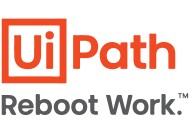As the U.S. continues to battle the ravages of the COVID-19 pandemic, federal, state and local government officials are still recovering from another, less public challenge: How to ensure that citizens in need receive benefits and services promptly, while at the same time, minimizing the risks of waste, fraud or abuse caused by bad actors looking to exploit a global crisis.
It’s a difficult balancing act. Without question, officials at every level of government over the past 18 months have had to confront overwhelming demands to deliver financial assistance as fast as possible to millions of people. And they had to do so, despite aging backend systems in desperate need of modernization — and which lacked the capacity or capability to meet the unprecedented volume of demands resulting from the pandemic.
That led to inevitable trade-offs. Agencies had to prioritize rapid payouts — so beneficiaries could pay their rent, receive medical care and feed their families — ahead of procedures designed to identify possible overpayments or fraud. Those procedures remain important, but they also result in processing delays and longer wait times for relief checks.
While agencies did a tremendous job trying to deliver those benefits, those priorities also resulted in an increase loss due to bad actors committing fraud. The Department of Justice estimates, for instance, that the Paycheck Protection and the Economic Injury Disaster Loan programs were the target of as much as $84 billion in potential fraud, according to a March House Committee on Oversight and Reform report.
The twin advantages of automation
Fortunately, there’s an innovative solution that not only reduces the need to choose between expediency and risk protection, but also helps agencies to enhance both — effectively allowing them to have their cake and eat it too.
What began as process automation has evolved significantly in recent years. Today’s advanced automation software with integrated AI is already helping agencies dramatically streamline data gathering and document processing. Agency leaders are now starting to think bigger about how automation can tackle larger or more systemic issues.
One example took shape at the U.S. Health Resources and Services Administration (HRSA), an agency whose mission is to provide services to citizens who are geographically isolated, economically or medically challenged. HRSA’s initial use cases of robotic process automation (RPA) focused on opportunities to improve internal control testing and oversight activities. HRSA subsequently began applying RPA to strengthen payment integrity activities. By leveraging automation, HRSA hopes to detect and prevent improper payments, and reduce fraud, waste and abuse.
Another success story — among many examples that emerged during the pandemic — comes from the Department of Labor in one of the country’s most populous states, which found itself overwhelmed with unemployment claims. By using readily deployable automation software to ingest and process unemployment claims, the department quickly worked through the sizable backlog of claims and significantly improved its level of customer service.
But in the process, it also quickly identified — and dramatically reduced the amount of — fraudulent unemployment claims attempting to get through the system, to roughly one-and-a-half percent of total claims. That translated into more than $10 billion in savings during the peak of unemployment payouts. And the savings are still accruing.
Automated document processing isn’t new to government. What is new is the ability that today’s automation software tools can give government agencies to:
· Analyze documents in real time
· Leverage machine learning to flag documents that look suspicious
· Speed up routing and processing cycles
· Scale and distribute workloads on demand
· Provide analytic perspective on potential patterns of fraud, waste and abuse
· Reduce backlogs and improve citizen service
· Facilitate/accelerate digital modernization of legacy systems
Over the near term, state labor and health and human services departments across the country may be surprised just how quickly they could benefit from automating their claims processing.
But longer term, automation’s potential for government could be huge. Consider the mandatory benefits paid out annually by Social Security, Medicare and Medicaid. The federal government will spend $1.15 trillion, $722 billion and $448 billion respectively in fiscal year 2021 to support those programs. It will spend another $645 billion on programs like food stamps, unemployment compensation, retirement and disability programs for civil servants, the Coast Guard and the military.
Imagine if agencies began to fully harness the power of automation — not only to reduce errors, fraud and waste, but also to reduce the backlog of claims and processing bottlenecks that continue to tax federal agency resources and impact millions of citizens and former civil servants and veterans. Multiply that potential across thousands of state and county agencies and the collective impact would be enormous.
Best of all, today’s automation software doesn’t require a big, costly IT development roll out. In many use cases, it simply takes a handful of dedicated employees who are eager to automate basic, repetitive processes — and department leaders who can see how automation can help deliver broader benefits to employees and the public.
But automation has to be seen as something more than a technology tool. Yes, it can give employees and organizations superhuman power and speed. But it’s real potential lies in the hands of leaders who can envision the fully automated enterprise to help solve large scale challenges. And that, after all, is what government is uniquely in the business of doing.
Learn morehow automation software from UiPath is helping public sector organizations deliver better outcomes.
By Chris Townsend, UiPath
Chris Townsend is Area Vice President, Public Sector, at UiPath, a leading provider of enterprise process automation platforms. He has more than 20 years of public sector technology industry experience.








